Painting Small Wildflowers
This week, we explore the beauty of small wildflowers and find what we can learn from nature when painting them.

>> See more pics at the Taiko Online Art Store!
I had a small blank canvas that I wanted to paint on before Midsummer. I did it with acrylic instead of oil because acrylic paint dries faster and you don’t have to wait days for the layers to dry.
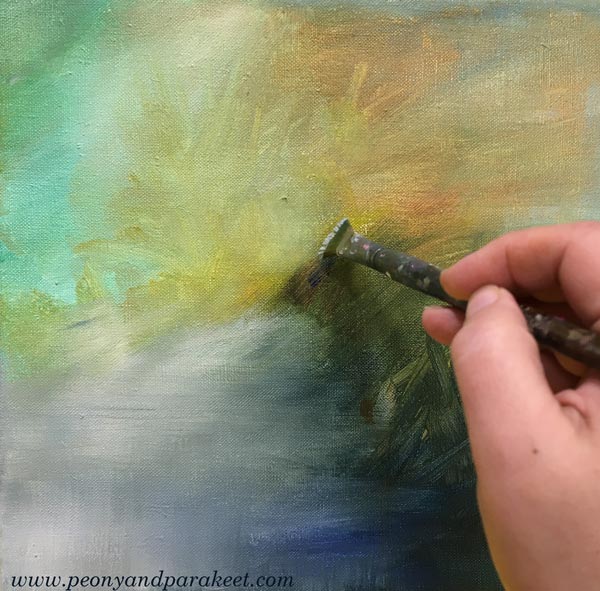
My idea was simple: wood geraniums – or do you call them cranesbills? In Finnish the plant is called “metsäkurjenpolvi” and they bloom everywhere now in June. We have them in our garden too, but I mostly study them on morning walks. As a child, they were my favorite flowers when it comes to wild flowers.

Even if I sometimes take photos of small wildflowers, I don’t want to paint from reference pictures, but freely. I can check the structure and shapes of flowers or leaves from photos, but if I start copying the exact detail, my expression stiffens. It’s like my head begins to ignore my heart, and that’s never good for art-making.
Starting with Big Brushes
At the beginning of the painting process, I don’t even know exactly what I want to express. The mood of the painting grows little by little and when I start, I’m clumsy and quite careless.
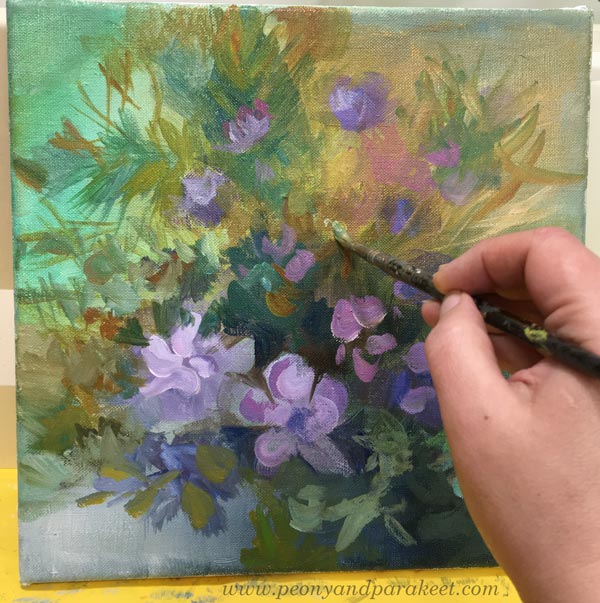
It’s actually pretty quick to make a nice little flower painting if you only think about one plant and don’t aim for anything else. But these days, I don’t want to leave any painting at that level. I want to offer more to look at and combine many observations in the same painting.
Here’s my painting from Day 1 to Day 2. The right lower corner didn’t change much, but the center and the right upper corner changed a lot. And the painting became more detailed.

Some paintings are great with the more abstract and loose touch. But here, I wanted to express the delicacy of small wildflowers and honor their tiny details. I also wanted to make the painting look more natural.
Beautiful Mess with Thin Strokes
Nature is wild and messy. We easily overlook that beautiful mess when we look at wildflowers in a meadow. Our eyes pick out our favorite flowers, and we don’t see all the other plants that are trying to get in the way. Grasses come to the front of the flowers and intersect everywhere. There are endless layers of plants if you look at the view as accurately as possible. Even when looking at this photo, did you notice all that layering?

It seems contradictory that the more romantic and spiritual I want to paint, the more I have to open my eyes to the reality. I need to paint those hays over the pretty wildflowers and let the nature make a beautiful mess in the canvas too.

Small Doses of Conflicting Colors for Flavor
In nature, the colors also get mixed with each other, and there are reflections and conflicting tones. So, even if the number of colors in the painting is limited, you always have to find a small dose of some different tone to spice it up. For example, add some bright red to make the purple flowers delicious! Similarly, cold greens need brownish tones.

In Finland, Midsummer is a big celebration. The nights are white now in the end of June and you can admire the flowers without going to sleep at all.

Paint abstract florals in acrylics with me: >> Buy Floral Freedom!
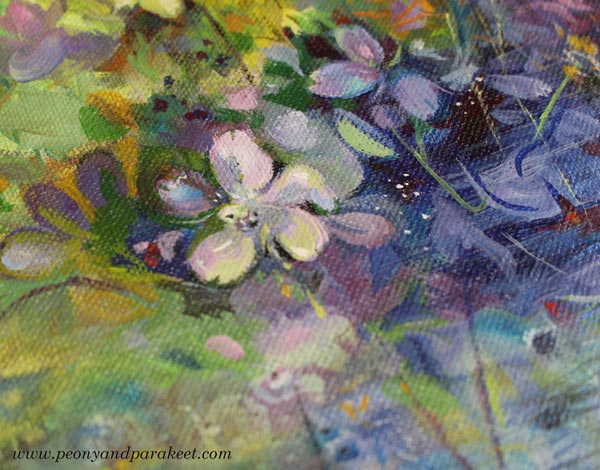
With these pictures, I wish you a wonderful Midsummer and lots of joy in observing and painting tiny treasures – small wildflowers!

Painting small wildflowers – Could this be your next art project?
Summer Watercolor Art with Origin and Attitude!
This week, I talk about creating summer watercolor art so that it’s fun and interesting. The season that you currently have doesn’t matter. It’s all about finding your origin and attitude!
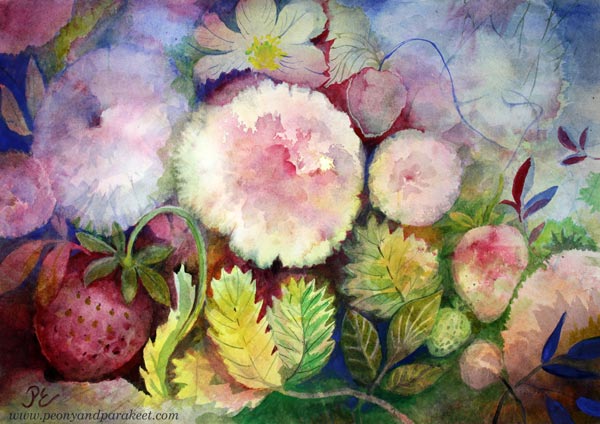
>> See more pics at the Taiko online art store!
Although the seasons influence my paintings, I mostly want to paint summer. In winter I yearn for summer, in spring I plan for summer, in summer I live summer and in autumn I remember summer!
Starting Summer Watercolor Art
The best summer month in Finland is July because it’s warm and of course, has peonies and strawberries like in the painting. But when I started the painting, I had no idea what would come up. There were just splashes of color and plenty of water.
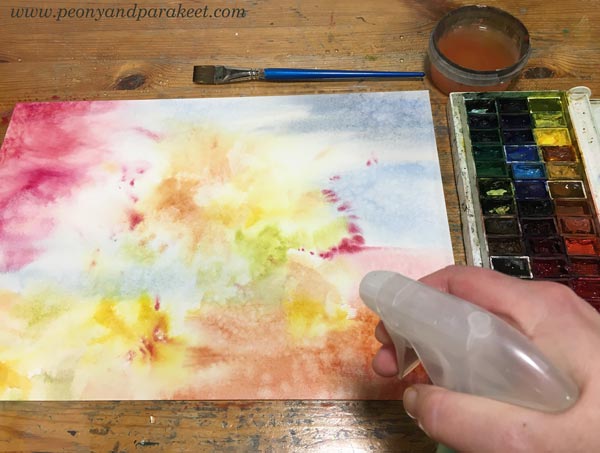
I like my summer watercolor art to have this kind of intuitive foundation with exciting randomness.
Finnish Summer
Peonies bloom at the turn of June and July and that is also when the best strawberry season begins. Finnish strawberries are really sweet, because the Finnish summer ripens them slowly. As a child, when asked for a favorite meal, I answered: Strawberries and whipped cream. I guess I was quite a romantic already!
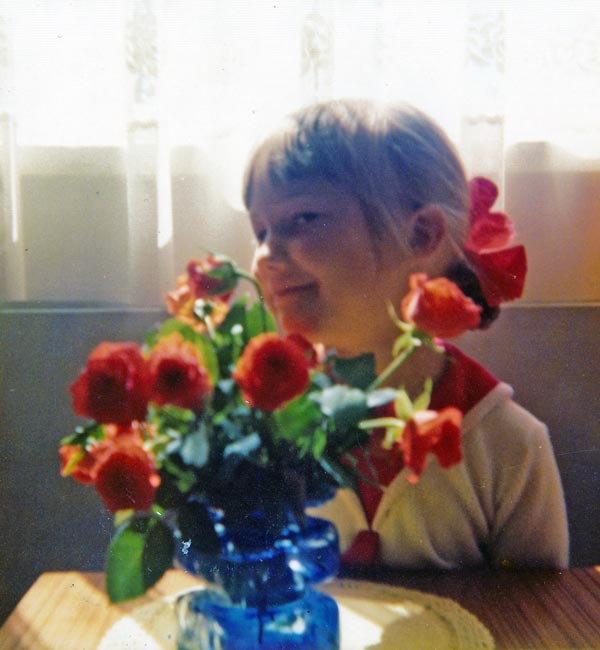
Peonies are my favourite flowers and I have written a lot about them on this blog. Our garden has over ten different peonies and I am eager to see them bloom. I hope that winter has not disciplined the most delicate varieties too much.
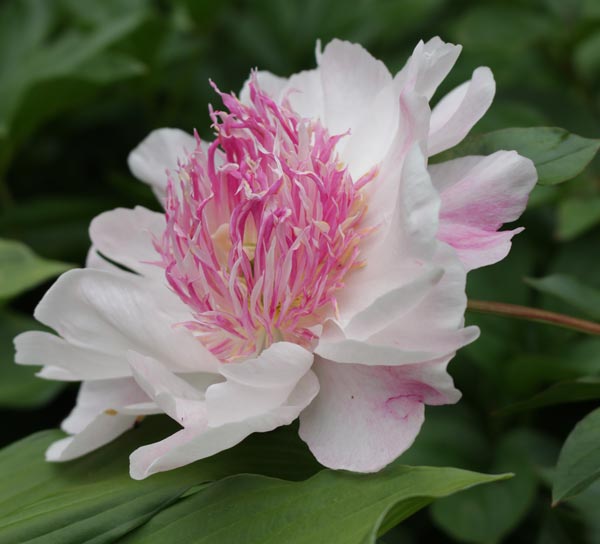
In summer, everything turns upside down: frost turns into heat, darkness into light, heavy turns into light, and light turns into heavy. Summer makes the big picture blurred and the details become more important. What felt heavy in winter is hardly remembered in summer. And small moments, even small irritations, become more noticeable in summer. This must be the effect of continuous light.
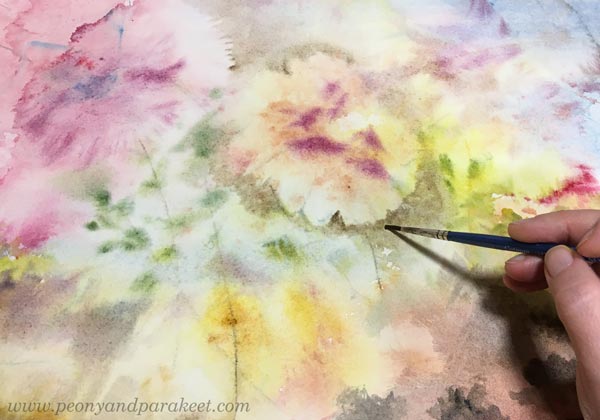
I know foreigners who come to Finland in summer with eye patches. But for me, lack of sleep and summer go together. I am done with the pitch-black winter when morning sleep is still deep. The boring black-and-white sceneries are finally replaced by the rich colorful details that is food for my paintings.
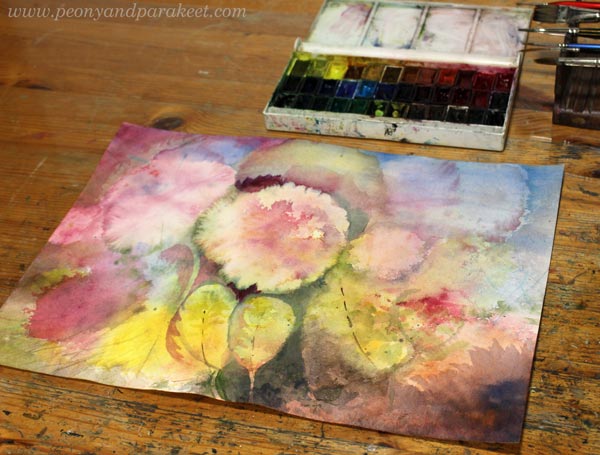
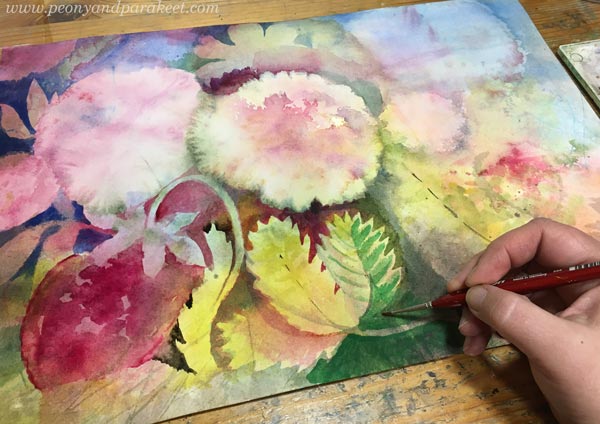
Look how the leaves changed when I started adding details!
Finnish Simplicity vs. Central European
When we visited Amsterdam in May, we went to the Antiekcentrum, which is a huge antique flea market.
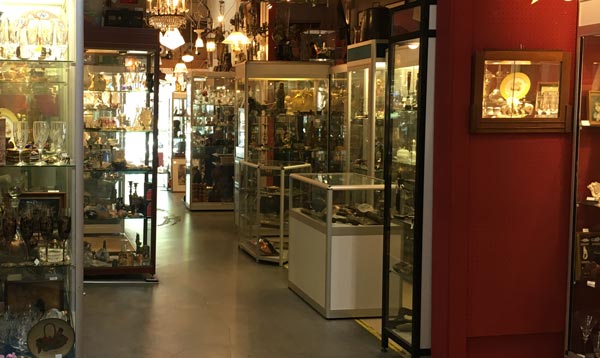
If there were a place like that in Finland, it would be full of Nordic design from the 1900s to the 1950s. Finnish high culture has a short history and our taste is a much more simplified version of Central European styles.
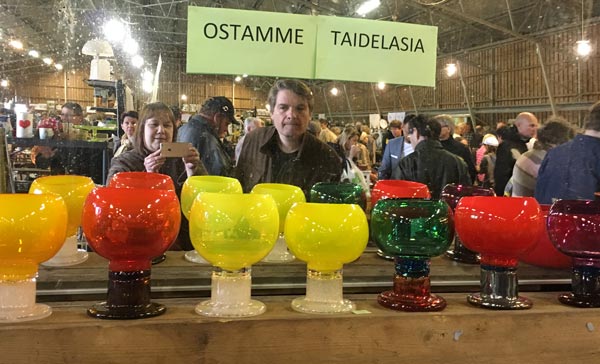
Our straightforwardness is not only in design, but it’s everywhere in Finland. We speak directly, often too directly, and value simplicity.
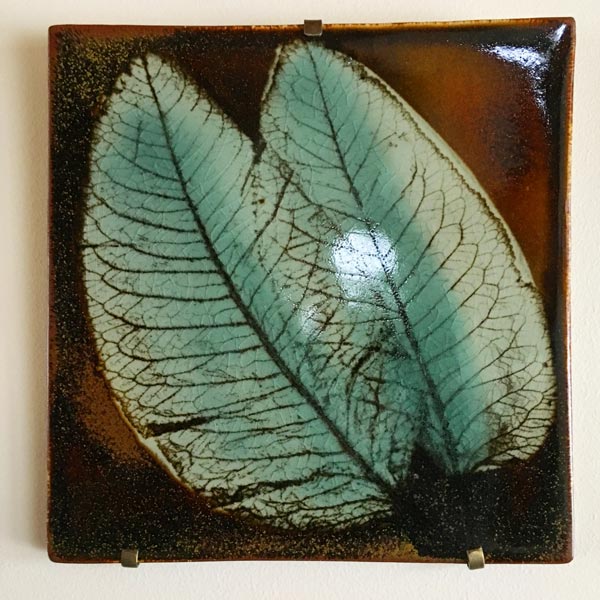
But despite the yearn for simplify, Finland is full of hidden romantics. The inner world of the seemingly rude people can surprise you. Our connection to nature is so immediate that not only strawberries and peonies but all the nature’s treasures creep into our souls so that we are not separate from them. Finnish people are confusingly simple and at the same time enormously diverse.
Details Make Any Peony Your Unique Peony
After the trip, I am increasingly aware that this is a part of Finland and Finnishness that I want to convey to you through this blog and my courses. I am aware that even if we share the love for art, we all have a little different point of view if we pass the big picture and turn our attention to the details. So, nuances in visual language and vocabulary!
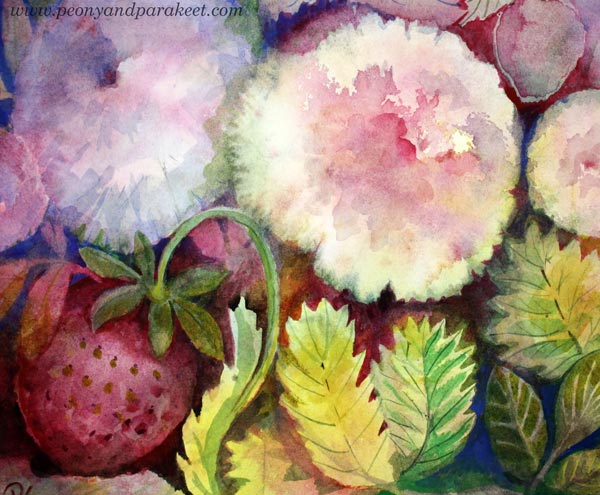
If you look at the world as a big picture, your art becomes too mundane. When a peony is just a flower, art-making gets boring like Finnish winter: “How to draw a peony,” you will google and then draw a picture that has nothing unique.
Instead, think about your origin and attitude! Surrender to the details and let the heaviness of the earth and the lightness of the sky immerse you in what you draw. Maybe there’s a cloud who dreams about staying still, and a peony who dreams about seeing the world from the sky. By taking the creative attitude, the strawberries can grow bigger than their stems can hold.
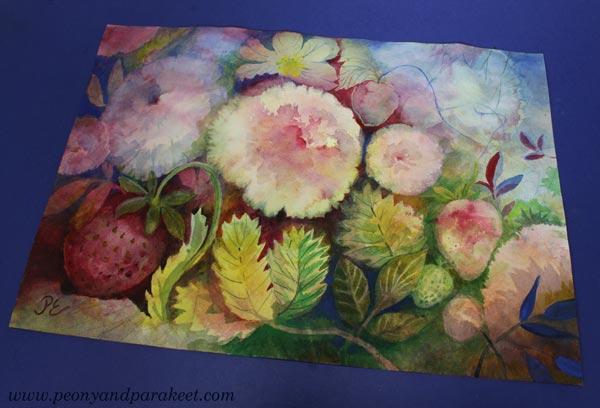
Of course, these are just examples. My point is that in art, you can change everything and make anything possible when you:
- know your origin: Find what already grows in you!
- stretch the idea of any mundane thing: Allow imagination and empathy!
- work the details long enough: Give time for your creativity to find you!
What do you think?
P.S. I am currently recording a new course about watercolor painting. It’s an independent sequel to Freely Grown and focuses on the idea of building a visual vocabulary.
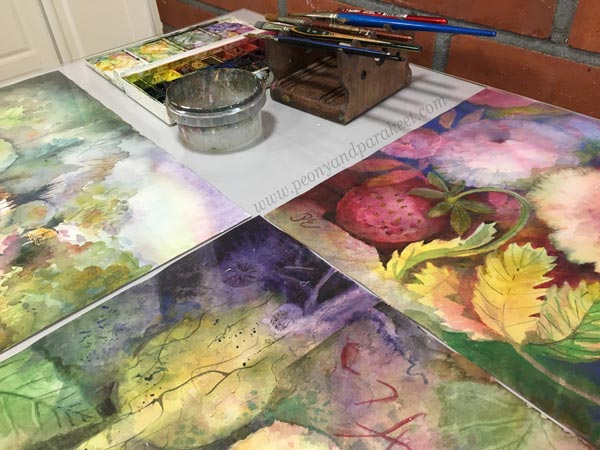
Flower Paintings at Rijksmuseum
Charming and necessary for any artist. Let’s admire the flower paintings at Rijksmuseum!
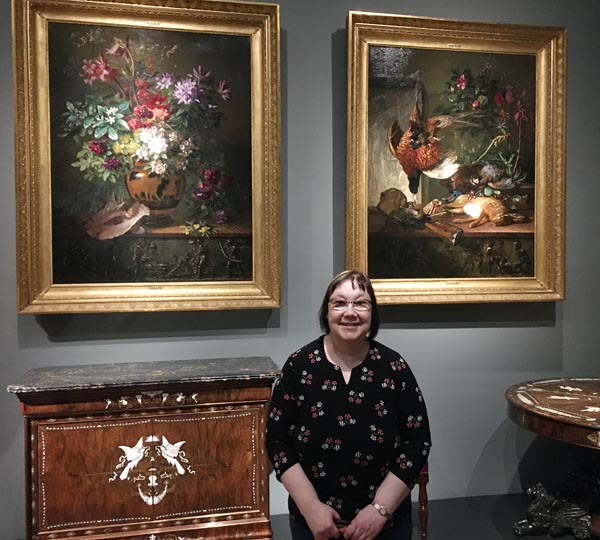
This week, I had a lovely time in the Netherlands, where my husband and I spent a few nights. The highlight of the trip was the visit to Rijksmuseum. It’s a huge museum in Amsterdam, and it takes many hours to see even a glimpse of all the artworks. For this post, I took some flower photos for you, as you may, like I do, love flower still lives.
Flower Paintings at Rijksmuseum with Some Notes
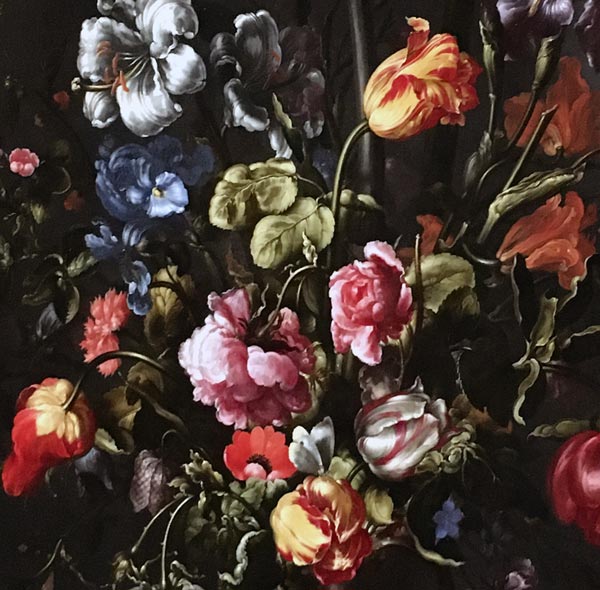
I love these paintings because the flowers are not isolated, but layered, giving a rich effect. Remember, you can paint just part of a flower and then another right next to it.

We can learn from Rachel Ruysch that part of the flower can be in the shade, making the most important flowers stand out even more.
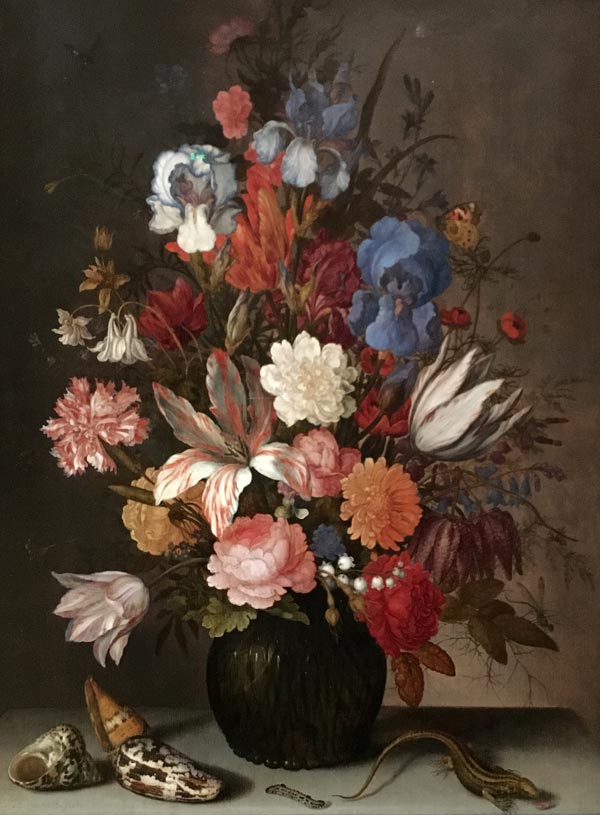
Animals are often included in old flower paintings. You can create a miniature world in one flower piece!
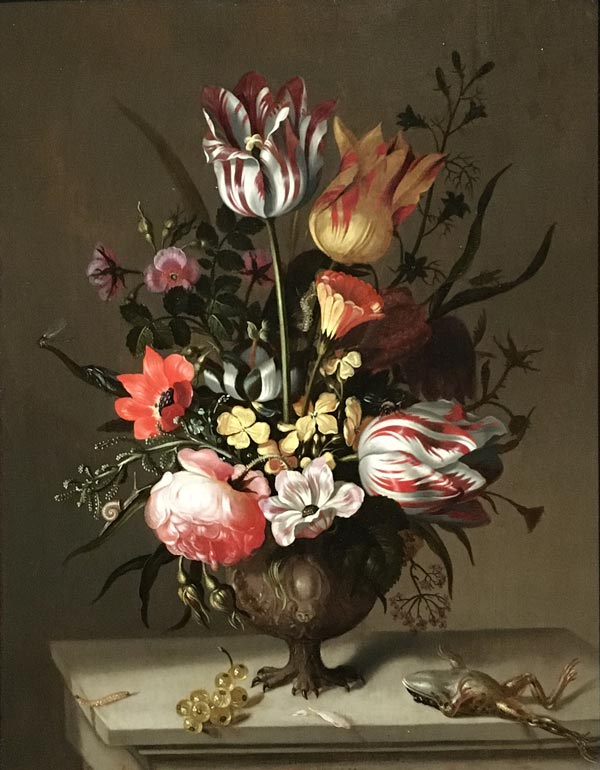
The dead frog here represents the cycle of nature. Some of the flowers may also be pointing downwards and appear withering.
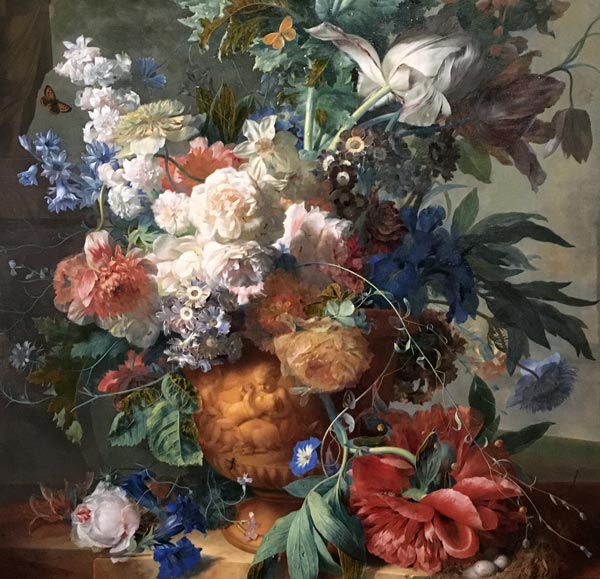
I am also fascinated by the backgrounds of old flower paintings. Even if their color is dark or neutral brownish, the variation in darkness or tone makes the painting feel natural.
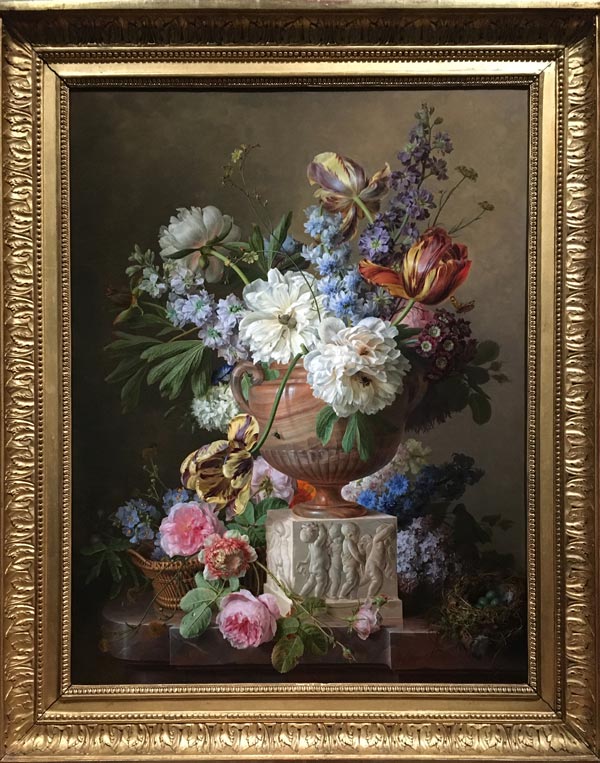
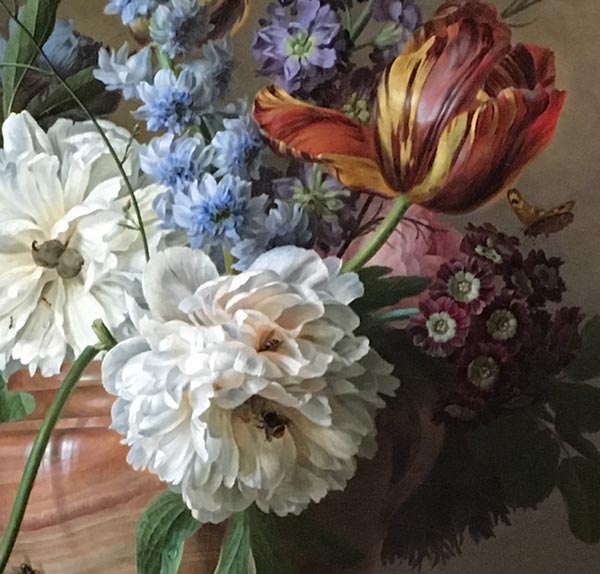
The abundance of details is a challenge for a busy contemporary artist. But on the other hand, one painting can be the source of inspiration for many pieces!
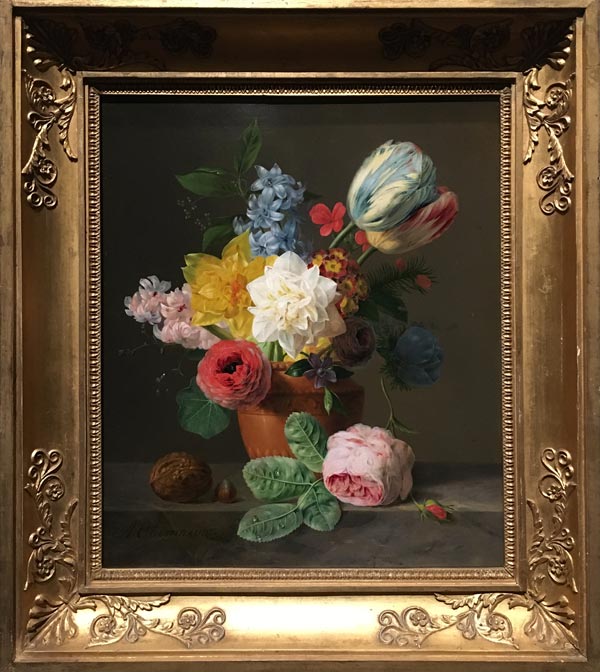
Did you notice that we started in the 17th century and gradually moved forward in time? The colors and their durability increase, while on the other hand the detail and abundance of flowers decrease.

But no matter what century, such beauty is not only charming, but also necessary. When everyday life slowly creates an empty hole inside me, I call the feeling “old art hunger”.
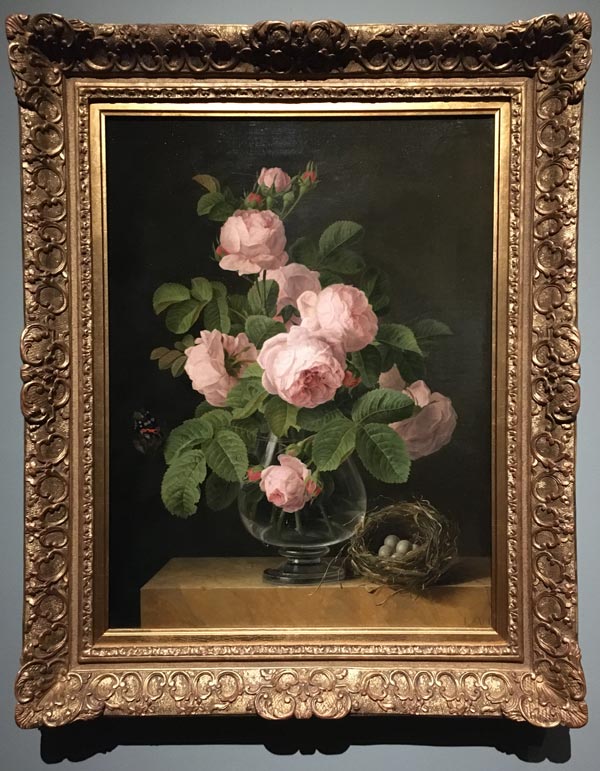
Now the hunger is gone and the hole feels filled again for a while. Seeing these flower paintings at Rijksmuseum was both a grounding and spiritual experience.
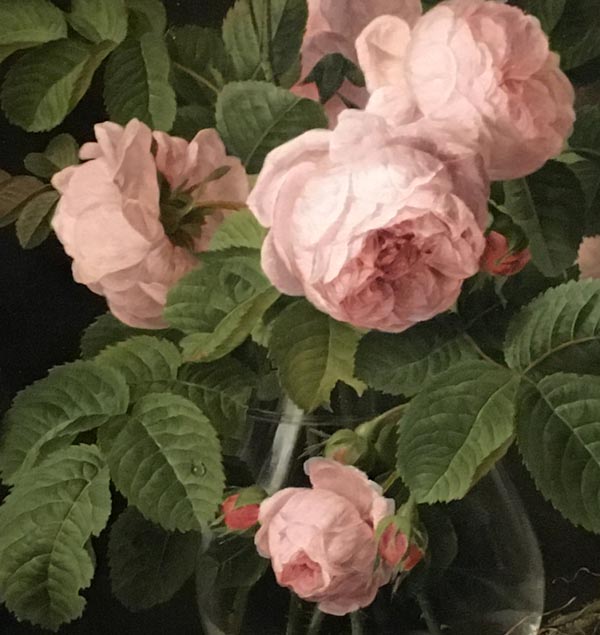
Let’s Paint Flowers – Inspiration for Art-Making
I am obsessed of painting flowers and this whole blog is full of inspiration for that. Here are some top picks for old-world-floral style:
- Flower painting comes to Life (2025) – Watch the video of finishing and exhibiting a floral oil painting
- Flower for Your Art Journal and the sequel Expressive Watercolor Flower Collage (2025) – A video and flower painting inspiration for art journalers
- Watercolor Flower Obsession (2024) – Watch the video of painting a flower card and see me talking about my love for old flower paintings
- Watercolor Greeting Card (2023) – Watch the video of painting a flower card
- Paint Beautiful Decorative Flowers (2023) – Old-world florals transformed to a more decorative art style
- Gelli Plate Meets Fine Art (2018) – A video and step-by step pics for two projects, one of which is a floral still-life
Intuitive Flowers with Colored Pencils
This week, we take an intuitive approach to flowers and color them freely with colored pencils. This method can also be easily adapted to watercolors.

Everyone’s flowers are different, but we can all start with the same steps. I will show you how to start and how to bring intuition into the process, and then you can finish the piece in your own style.

Let’s get the colored pencils and start intuitive flowers step-by-step!
Step 1 – Background
Start by intuitively picking one main color. I choose a color that I feel strangely drawn to, or a pencil that looks a bit sad and needs some quality time with me. I may sharpen or re-arrange the pencils before I start, so that I feel more connection with them.
With the chosen pencil, color the paper lightly and softly. Leave a part of the center blank so that you will also have white in your work.

When you feel bored, add other colors for an energy boost and spiciness, but always get back to your main color. The main color sets the mood and makes sure that every flower will breathe the same air.
I use soft-tipped colored pencils, such as Prismacolor Premier and Caran d’Ache Luminance. Thin layers are a joy to color and the strokes are soft. My paper is Fabriano Accademia Drawing Paper (200 gsm/94 lbs).
Step 2 – Circles
Color a new background layer so that you leave round areas uncolored. These are like ghosts that will be turned to flowers in the next step.

Make sure you have big, small, and medium circles, not just one size. Let some circles overlap and some disappear partly near the edges. This step is simple, but not very intuitive, because we tend to create circles of one size and separate from each other.
What does intuitive mean to you?
For me, it’s an emotional connection to colors and bringing out the spirit rather than the material. If you think intuitive is what feels easy, you’re holding back your development in making art.
Step 3 – Notches
Turn circles to flowers by coloring notches with the background colors. Make all kinds of shapes this way. I try to avoid symmetry, because flowers are rarely perfectly symmetrical. The more imaginative the shapes are, the more spirit I see in them.

You can also add some color to the flowers if it helps you to form a tighter connection, but do it only lightly in this step.
Step 4 – Colors
Add more colors – and not only to the flowers but also to the background. I like to think that the spirit of the flower is larger than its outline. The flower radiates the spirit, and the color of the flower is more in its surroundings than in the flower itself. This makes the background as fun to color as the flowers.

Make stems thin and curvy when you want the flowers to look delicate.
Step 5 – Repeat!
Add more details with the techniques of steps 1-4: more background color, more circles, more notches, more colors.

The more experienced you are, the more patience you have. Intuition is a rusty vehicle. The connection improves with time, and your piece will begin to speak to you.

Grow Your Skills at Fun Botanicum!
Fun Botanicum is a great course for all who want to grow their skills in drawing plants and learning more techniques for florals.
Intuitive Flowers and Colored Pencils
For me, being intuitive also means being flexible. I cherish every little flower, but also accept that not every flower can remain in the final piece.

A flower can bloom and give her soul to you, and then become a background spirit only. In this piece that happened a lot.

My drawing took about four hours to make.

What does intuitive mean to you? Do you aim for intuition when you are creating art?